Chasing, capturing or killing any animal particularly the wildlife with an intention to consume as food, trade material or as a means of pest control in accordance with applicable law is hunting, which is poaching if illegal. Hunting was the need of the caveman and oldest cave paintings have shown boar and ox hunting. Sometimes hunting is of purely cultural value, as is fox hunting in case of the English and Scotts- though it has been now banned both in England and Scotland.
Hunting Houbara bustard and other birds with falcon is still a prevalent practice in the aristocracy of Arab Emirates. Animals like deer; rabbit etc. are hunted for population control. Hunted animals termed as game, may be as small as a partridge and as big as an elephant. The term big game applies to the hunting of lions, leopards, elephants, rhinoceros and cape buffalo. In North America, bears and bison are now protected while antelope, moose, elk and deer are still hunted. With the domestication of animals and development of agriculture, need for hunting declined steadily but on account of its cultural value, hunting still persists.
1. King George V
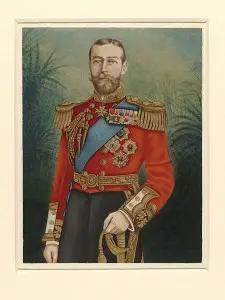
George Fredrick Ernest Albert, more known as King George V, was king of United Kingdom, British Dominions, and Emperor of India from May 6,1910 till his death on January 20, 1936. Hunting is the skill learned and practiced by the widest range of people including the poorest of the poor to the greatest of the kings and emperors like King George V. According to the ‘Historical record of the Imperial visit to India, 1911, P232’, ‘The shooting ring formed on 25th of December, 1911, was the largest during the whole visit, the number of elephants engaged being just under six hundred’¦. The first tiger was shot by His Majesty in mid-air as it was leaping a small stream. There were a total of 39 tigers killed during this hunt’.
2. King Juan Carlos
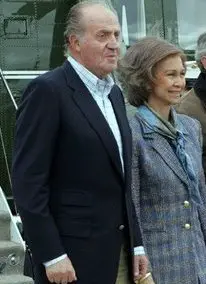
Juan Carlos Alfonso Victor Maria de Borbon y Borbon-Dos- Sicilias, better known as King Juan Carlos is reigning king of Spain since November 22, 1975. He was born to Infante Juan, Count of Barcelona and Princess Maria de las Mercedes of bourbon-Two Sicilias on January 5 1938.The king is fond of hunting but recently it has become a nightmare for the royal family. His recent visit to Africa for hunting elephant enraged animal right campaigners. They condemned his hunting an endangered species. The king was an honorary presided of WWF Spanish branch since 1968. The king has however offered an unprecedented apology for the mentioned elephant hunting.
3. Theodore Roosevelt

Theodore Roosevelt, the 26th president of the United States, Nicknamed in childhood as ‘Teddy’ was born on October 27, 1858 and died on January 6, and 1919.He is known for his robust and multi dimensional personality and one of these dimensions is the cowboy hunter . At the age of seven, he got a dead seal head and preserved it in what he called ‘Roosevelt Museum of Natural History’. As a cowboy, he learned to ride rope and hunt. Theodore Roosevelt served as a deputy sheriff and wrote: Hunting Trips of a Ranchman, Ranch Life and Hunting, and The Wilderness Hunter. He is the only person to hold the title of ‘Chief Scout Citizen’. His statue appears on Mount Rushmore Memorial, along with those of George Washington, Thomas Jefferson and Abraham Lincoln.
4. Ernest Hemingway
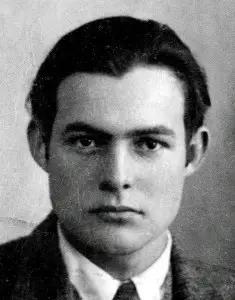
Ernest Hemingway, the famous American writer was born on July 21, 1899 and died in July 2, 1961.Inspired by Theodore Roosevelt’s legendary hunts, he borrowed funds from Pauline’s uncle. He, along with Pauline and another friend, traveled to Africa in 1933. He spent three moths there. Later on, he also traveled to Rwanda and Belgian Congo. His travels and hunting experience in Kenya, Tanzania and the plains of Serengeti, inspired him to write ‘Green Hills of Africa’ and ‘Snows of Kilimanjaro’. Hemingway’s writing ‘style’ strongly influenced the 20th century fiction. He was awarded Pulitzer Prize for Fiction in 1953 for his masterpiece ‘Old Man and the Sea’ and was cited by the Nobel Committee as contributing to the awarding of the ‘Nobel Prize in Literature in 1954.
5. Frank Maurice Allen
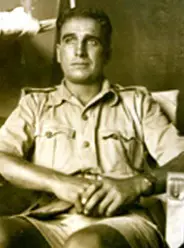
Frank Maurice Allen, also known as Bunny Allen was born in Upton Cum Chalvey, Buckinghamshire on April 17, 1906 and died in Lamu Island on January 14, 2002. He was educated at Sir William Borlase’s Grammar School, Marlow, and Buckinghamshire. He came to Kenya in 1927 to join his two brothers and got a job as hunting guide. He participated in three royal safaris and is known for capturing a cheetah by jumping on its back from a jeep during the chase. He was commissioned in the Kings African Rifles during the World War II.
6. Charles Jesse Jones

Charles Jesse Jones, better known as Buffalo Jones, was born to Noah Nicholas Jones and Jane Munden in Tazewell County, Illinois and died on October 1, 1919.His father, a farmer, once hired Abraham Lincoln as his attorney. Jones started capturing animals at an early age. Around 1870 he built a sod house which was somewhat like a longhouse but made by piling up cut pieces of grassy land with root system. He started earning there by hunting bison and horses. He is recognized as one of the top ‘preservers of American bison’. During his long hunting trips he met the famous lawman Pat Garrett who killed Billy the Kid. On account of his successful bison hunting, he was nicknamed ‘Buffalo Jones’.
7. Walter Dalrymple Maitland Bell
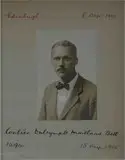
Walter Dalrymple Maitland Bell was a unique person in that, in addition to being a famed big game hunter, he was a soldier, writer, painter and a decorated pilot. He was an advocate of shooting accuracy and to improve his accuracy he dissected the hunted animals and studied their anatomy. He keenly observed the skulls of the hunted animals particularly of elephants to assess his accuracy. He could shoot accurately from difficult positions and shooting from a particular angle was named ‘Bell Shot’ after him.
8. John Alexander Hunter
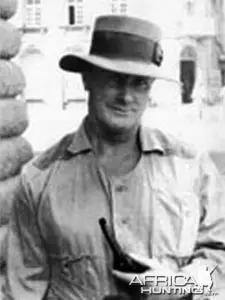
John Alexander Hunter commonly known as J.A.Hunter was born in Shearington, Dumfries-shire, Scotland on May 30, 1887 and died in Kenya on March 29, 1963 at the age of 75. He was a professional hunter and led many notable safaris from early 1900s to 1950s. He held many hunting world records. J.A.Hunter had hunted more than 1000 rhinos. In 1958 he built the ‘Hunter’s Lodge’ hotel in Makindu, Kenya and died there in 1963. Based on his hunting experience, he wrote many books, few of them being; Hunter; an autobiography, Hunter’s Tracks, White Hunter, Tales of the African Frontier, African Hunter, Harper and Brothers, African Bush Adventures and Killers of Kilimanjaro.
9. Jim Corbett

Jim Corbett was born in the famous forest area of Nanital, United Provinces, British India on July25, 1875 and died in Nyeri, Kenya on April 19, 1955. He is one of topmost all time hunters of the world. From 1907 to 1938 he shot, 33 documented man eaters, of which 19 were tigers and 14 were leopards. It is estimated that these big cats had killed and eaten more than 1200 people. Jim Corbett had written an absorbing account of these hunting adventures as ‘Man eaters of Kumaon’.
10. Col. August Roland Von Spiess
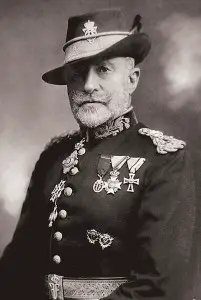
Col. August Roland Von Spiess was born in Austro-Hungary on August 6, 1864 and died in Romania in 1953. At the end of World War I, he finished his military career and King Ferdinand of Romania appointed him as Director of the Royal Hunts. Starting from July 1, 1921, he retained the office till 1939. During his hunting career he collected more than 1000 trophies. He wrote several books about hunting and a few of them are; Carpathian Stags, Under the Spell of Carpathians, Romanian Royal Hunts and Hunts in Africa.
Conclusion:
There has been a paradigm shift in the evolutionary history of hunting from ‘must do for survival’ to ‘ never do it again’.What a paradox that the same act of hunting by a king in past ( King George V) is recorded as a matter of pride, while it is looked down upon as a matter of shame when enacted by a present King (King Juan Carlos).










November 4, 2017 1:39 pm
Hi I have a cape gun ( 14 bore and 40 bore express two groove barrels) with the initials EBHJ on the stock, do you know of a hunter of this name? it dates from ca. 1860. Do you know other places I might try I would love to know who owned this gun